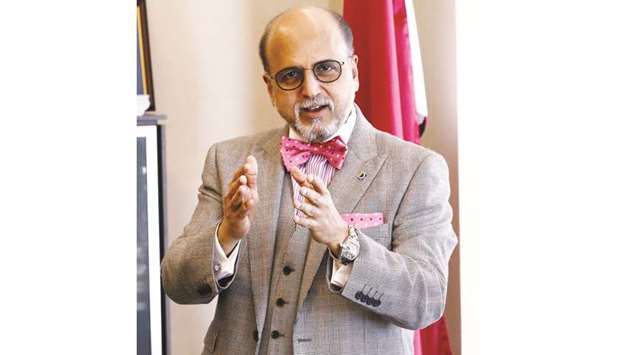“Funding mix is regularly monitored and share of individual sources of funding is altered to align with the funding strategy of the bank. Doha Bank maintained very healthy liquidity as of end 2017,” Seetharaman told Gulf Times in an interview.
While customer deposits remain the “main pillar of funding” for Doha Bank, debt issuances under its updated EMTN programme, as well as bilateral and term borrowings are the main sources of DB’s medium term financing.
Additionally, Seetharaman said, necessary approvals are in place to procure funding through Certificate of Deposits and Euro Commercial Paper.
On Doha Bank’s 2017 FY results, Seetharaman said, “Our net interest income has surged on account of prudent asset allocation across loans and investments, pragmatic lending and enhanced exposure from debt. The forex income is up by capitalising on volatile market conditions. The deposit growth is up on account of strengthening our liquidity management, Doha Bank’s trade finance portfolio is growing well, and we are also looking forward to expand further in the Asia region.”
Doha Bank’s capital adequacy ratio (CAR) as of end-2017 stands at a very healthy 17.5%. This gives Doha Bank enough room to increase lending and support the funding needs of local projects.
Further, Doha Bank’s strategy is to rely on both local and cross-border liquidity to fund its asset growth. Doha Bank’s established relationship with the government, GREs and private corporate establishments help in securing local deposits, whereas long established presence in key financial hubs through representative office and branches enable the Bank to procure cost-effective cross-border deposits.
“Additionally, strong credit rating for Qatar as well as the bank, aided by our active presence in EMTN and syndication space provide us opportunity to raise cost-effective medium term financing.”
Asked whether Doha Bank was planning to get into the international debt market, he said, “It constantly reviews its current and future funding requirements as part of prudent liquidity management. We have previously established an EMTN programme and during 2017 issued a number of private placements.
“In 2018, following any issue from the State of Qatar, we may consider doing a public issue in the international debt markets subject to market conditions at the time,” Seetharaman noted.
On Doha Bank plans for the year, the CEO said, “Our strategy in relation to retail will continue to be optimisation and digitisation in order to drive maximum efficiencies whilst providing first class customer service and an innovative product range. We have recently merged some branches and will continue to evaluate our physical footprint whilst ensuring we have presence in flagship locations such as new malls.
“The corporate segment will be the fastest growing and we have key expertise in this area. Our SME product range was the first to be developed in Qatar. We are continuing to expand in India and are confident that we can grow in the world’s fastest growing large economy. Doha Bank already has two fully functional branches in Indian cities — Mumbai and Kochi. The third branch will be opening in Chennai in India’s Tamil Nadu state soon. The formal launch will be held in April.”
Seetharaman said while the blockade (on Qatar) threw up many challenges, it provided opportunities as well.
“The whole business model has to be changed, economic realignment became a must. With two full-scale branches in the UAE — in Dubai and Abu Dhabi, we are among the most impacted. Day one, the liquidity was at stake. So, we had to change the business model, which we did. We can create opportunities in a differential form. That’s what we have managed to do.




